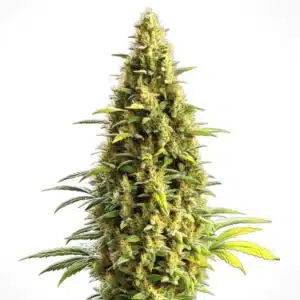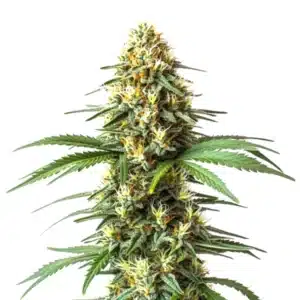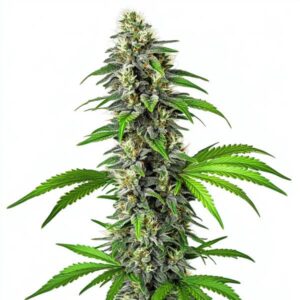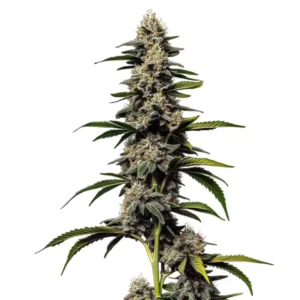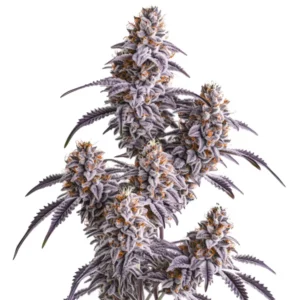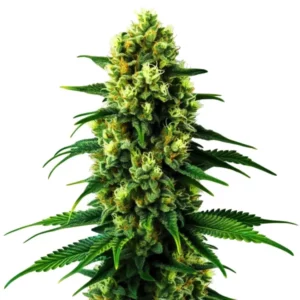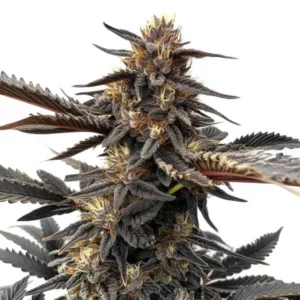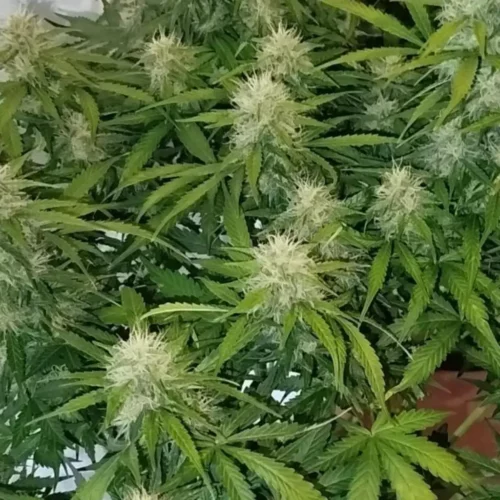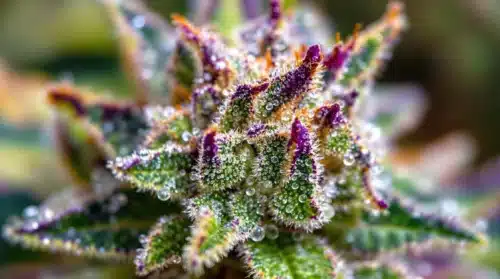When it comes to cultivating top quality cannabis, trimming fan leaves during flowering is a technique that growers often debate. This practice, when done correctly, can optimize light distribution, improve airflow, and help cannabis plants focus their energy on bud development.
The plant breathes through its leaves, they’re like its lungs, so it’s not a good idea to remove them all at once. It’s important to carefully select which leaves to trim. Understanding how and why to implement this technique can make a significant difference in the quality and quantity of your harvest. Let’s explore why this process is beneficial and how to do it effectively while minimizing risks.
What Are Fan Leaves and Their Purpose?
Fan leaves are the large, iconic leaves that cannabis plants produce. These leaves serve as solar panels, capturing light and converting it into energy through photosynthesis. They play a critical role in the plant’s early development, allowing it to grow strong and healthy. While they are essential during the vegetative stage, their role evolves as the plant transitions to flowering.
During flowering, fan leaves may overshadow the budding sites, competing for resources that the plant could otherwise allocate to flower production. Managing these leaves strategically helps ensure optimal plant health and productivity.
Why Trim Fan Leaves During the Flowering Stage?
As the plant begins to flower, fan leaves can sometimes block light from reaching lower buds. They can also restrict airflow, creating a humid environment that promotes mold and pest infestations. Trimming these leaves allows more light to penetrate the canopy, promotes better airflow, and reduces the risk of diseases.
Additionally, trimming helps redirect the plant’s energy toward developing flowers instead of maintaining unnecessary foliage. This optimization ensures that your cannabis plant focuses on producing dense, high quality buds, which is the ultimate goal for most growers.
Promos & Deals
Benefits of Trimming Fan Leaves During Flowering
Trimming fan leaves offers several advantages for cannabis plants in the flowering stage. This technique, when done carefully, can significantly enhance your plant’s health and yield. Each benefit contributes to a more productive and efficient grow.
Improving Light Penetration for Lower Buds
Fan leaves can act as barriers, preventing light from reaching lower parts of the plant. Trimming these leaves allows light to penetrate deeper, ensuring that all buds receive adequate exposure. This helps the plant produce denser and more potent flowers, even on the lower branches.
With improved light distribution, you maximize the potential of your entire plant rather than just the top colas. Ensuring light reaches every bud site encourages uniform growth and enhances the overall quality of the harvest.
Enhancing Airflow to Prevent Mold and Pests
Lower leaves should be removed during flowering, leaving the stem clean from the soil up to about 60 cm. This helps prevent pests and allows the plant to focus its energy on the top buds.
Dense foliage can trap moisture and create the perfect environment for mold and pests. By removing some fan leaves, you increase airflow throughout the plant. Proper airflow reduces humidity levels and minimizes the risk of common issues like powdery mildew or spider mites.
This improved air circulation ensures that your plants remain healthy throughout the flowering phase, reducing the likelihood of costly setbacks. Healthy airflow is especially important in dense grow spaces where ventilation might be limited.
Redirecting Energy to Bud Development
During the flowering stage, cannabis plants focus their energy on producing flowers. Trimming fan leaves helps redirect this energy, allowing the plant to prioritize bud growth instead of maintaining unnecessary foliage. This can result in larger, more resinous buds.
Additionally, plants with optimized energy distribution tend to recover faster from trimming, further enhancing their yield potential. Redirecting energy effectively can lead to visually stunning and highly potent cannabis flowers.
When to Trim Fan Leaves During Flowering
Timing is critical when trimming fan leaves. Knowing when and how to trim ensures you maximize the benefits without causing stress to the plant. Proper timing helps the plant adjust to the changes without compromising its overall health.
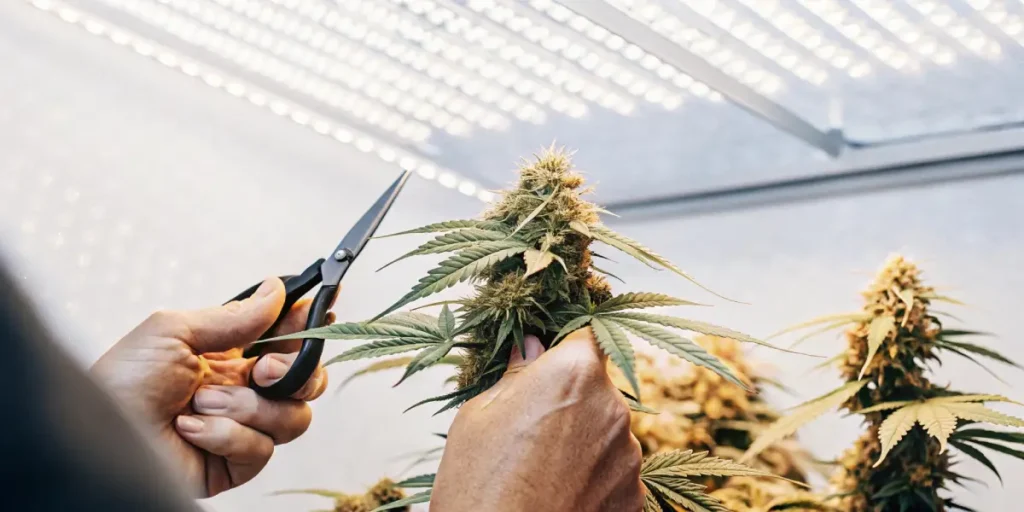
Identifying the Right Time to Trim
The best time to trim fan leaves is early in the flowering stage, typically during the first few weeks. At this stage, the plant is still adaptable and can recover quickly from the trimming process. Avoid trimming too late in flowering, as this can cause unnecessary stress and potentially stunt bud development.
If your plant shows signs of overcrowding or shading, it’s an indicator that trimming is necessary. Regular observation helps you identify the perfect window for action. Trimming at the right time minimizes stress and ensures the plant continues to thrive.
Signs Your Plant Will Benefit from Trimming
Look for signs that your plant may need trimming, such as:
- Dense foliage blocking light from reaching lower buds.
- Poor airflow resulting in high humidity around the plant.
- Fan leaves overlapping and creating shaded areas.
- Yellowing or dying fan leaves that no longer contribute to photosynthesis.
Addressing these signs by trimming fan leaves can lead to healthier plants and better yields. Recognizing these indicators ensures that your efforts focus on what will most benefit your grow.
How to Trim Fan Leaves During Flowering
Trimming fan leaves requires precision and care. Follow these steps to ensure you do it effectively without harming your plants. A strategic approach minimizes stress and maximizes the positive impact on your cannabis plants.
Tools Needed for Effective Trimming
Having the right tools is essential for a successful trimming session. Here’s what you’ll need:
- Sharp pruning scissors: For clean cuts that minimize plant stress.
- Gloves: To prevent transferring oils or contaminants to the plant.
- Isopropyl alcohol: For sanitizing your tools before and during trimming.
Investing in high-quality tools makes the process smoother and reduces the risk of accidental damage to your plants. Clean tools are particularly important to prevent introducing pathogens that could harm your crop.
Step by Step Guide to Trimming Fan Leaves
- Inspect the Plant: Identify fan leaves that block light or restrict airflow.
- Sanitize Your Tools: Clean your scissors with isopropyl alcohol to prevent the spread of bacteria or pests.
- Trim Strategically: Remove fan leaves that are large, overlapping, or shading buds. Avoid over-trimming to ensure the plant retains enough foliage for photosynthesis.
- Monitor Plant Response: Observe the plant over the next few days to ensure it recovers well and shows no signs of stress. Adjust your trimming approach based on how the plant responds.
By following these steps, you maintain the balance between improving conditions and preserving the plant’s vitality. Monitoring plant recovery is key to maintaining long-term health and achieving optimal results.
Avoiding Over Trimming and Plant Stress
Over trimming can do more harm than good. Remove only 20-30% of the fan leaves at a time to minimize stress. Allow the plant a few days to recover before making additional trims. Gradual trimming ensures that the plant remains healthy and continues to produce high quality buds.
It’s also important to consider whether those branches or leaves can be trained or shaped instead of pruning them indiscriminately. Whenever possible, it’s better to guide and mold growth rather than cut aggressively.
Plants that experience minimal stress after trimming are more likely to maintain robust growth and deliver better yields. Patience and precision are your best tools in this process.
Misconceptions About Trimming Fan Leaves
Many growers hesitate to trim fan leaves due to misconceptions. Clearing up these misunderstandings can help you make informed decisions and avoid unnecessary hesitation.
Will Trimming Fan Leaves Harm the Plant?
When done correctly, trimming fan leaves does not harm the plant. In fact, it can improve overall health by optimizing light and airflow. The key is to trim thoughtfully and avoid removing too much foliage at once. Proper technique ensures the plant recovers quickly and benefits from the trimming process.
Trimming can also be a preventative measure, reducing the chances of mold, pests, or uneven growth. These benefits far outweigh the risks when done correctly.
Do All Cannabis Strains Require Trimming?
Not all strains benefit equally from trimming. Some strains, particularly sativas, naturally have more open structures that allow light and airflow. Indicas, with their dense foliage, may benefit more from trimming fan leaves during flowering. Knowing the unique characteristics of your strain helps you determine the best approach.
Additionally, hybrids may vary in their trimming needs, requiring growers to adapt their strategies based on observation and experience. Knowing your strain’s tendencies is critical to successful trimming practices.
Tips for Effective Trimming
Effective trimming is about striking the right balance between removing unnecessary fan leaves and maintaining plant health. By following these tips, you can ensure that your plants remain vigorous and productive throughout the flowering stage.
Best Practices for Maintaining Healthy Plants
Start by observing your plants closely before beginning the trimming process. Healthy plants recover faster from trimming, so ensure your cannabis is well-hydrated and free from visible stress. Target large fan leaves that block light or create crowded areas within the canopy.
Use sterilized tools to minimize the risk of infection. Clean your scissors with isopropyl alcohol between cuts to prevent transferring bacteria or pests from one part of the plant to another. Remember, trimming should enhance your plant’s growth, not harm it, so avoid cutting too many leaves at once.
Monitoring Plants After Trimming
After trimming, monitor your plants for signs of stress or poor recovery. Wilting, discoloration, or slowed growth may indicate over-trimming or other issues. If any of these symptoms occur, allow the plant to rest before performing additional trims.
Keep an eye on humidity and airflow, especially in the days following trimming. Improved air circulation helps plants recover quickly and reduces the risk of mold or pest infestations. Adjust your grow room’s environment to ensure optimal recovery conditions.
Advanced Techniques for Trimming Fan Leaves
Experienced growers often incorporate advanced trimming techniques to further optimize their plants. These methods require precision and a deeper understanding of cannabis growth patterns.
Defoliation for Maximum Light Penetration
Defoliation involves removing a significant number of leaves to maximize light penetration and airflow. This technique is best suited for experienced growers who can accurately assess their plant’s tolerance. When done correctly, defoliation can lead to larger, more uniform buds across the plant.
Perform defoliation during the early flowering stage and avoid making drastic cuts too late in the plant’s cycle. Start with the largest fan leaves and gradually remove additional foliage over time, observing the plant’s recovery after each session.
Selective Pruning for Targeted Growth
Selective pruning focuses on shaping the plant to optimize its structure. By carefully removing specific fan leaves and lower branches, you can direct energy toward the main colas. This technique is particularly useful for indoor grows with limited vertical space.
Plan your pruning sessions in advance and work systematically, removing only what is necessary to achieve your desired results. Selective pruning ensures your plant’s energy is channeled effectively, promoting healthier growth and higher yields.
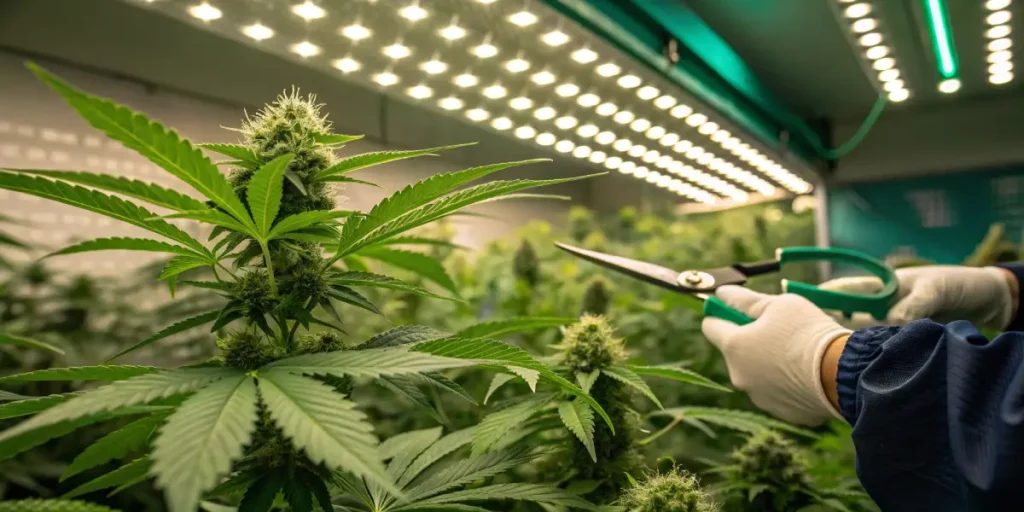
FAQs About Trimming Fan Leaves During Flowering
Many growers have questions about trimming fan leaves, especially when trying to maximize their cannabis yields. Here are answers to some of the most common concerns.
How Often Should I Trim Fan Leaves?
Trimming frequency depends on your plant’s growth and overall structure. For most growers, trimming every 1-2 weeks during the early flowering stage is sufficient. This allows you to address overcrowding without over-stressing the plant.
Monitor your plants to determine when additional trimming is needed. If leaves are blocking light or restricting airflow, it may be time for another session. However, avoid trimming too often, as this can cause undue stress and affect bud development.
Can I Trim Fan Leaves Late in Flowering?
Trimming late in the flowering stage is generally discouraged, as plants are less resilient and more focused on bud development. Removing fan leaves at this stage can increase stress and potentially reduce yields.
If you must trim late in flowering, limit your cuts to dead or dying leaves that no longer contribute to the plant’s growth. Be gentle and avoid disturbing the plant’s overall structure to minimize the risk of stunted development.
What Happens If I Don’t Trim Fan Leaves?
Choosing not to trim fan leaves can lead to overcrowding, reduced light penetration, and poor airflow. This increases the risk of mold, pests, and underdeveloped lower buds. While some growers prefer to avoid trimming, it’s essential to monitor plant health and address any issues caused by excessive foliage.
Leaving fan leaves untouched may work for certain strains with naturally open structures, but for dense plants, trimming often provides significant benefits. Balancing plant health and productivity is key to deciding whether trimming is necessary.


